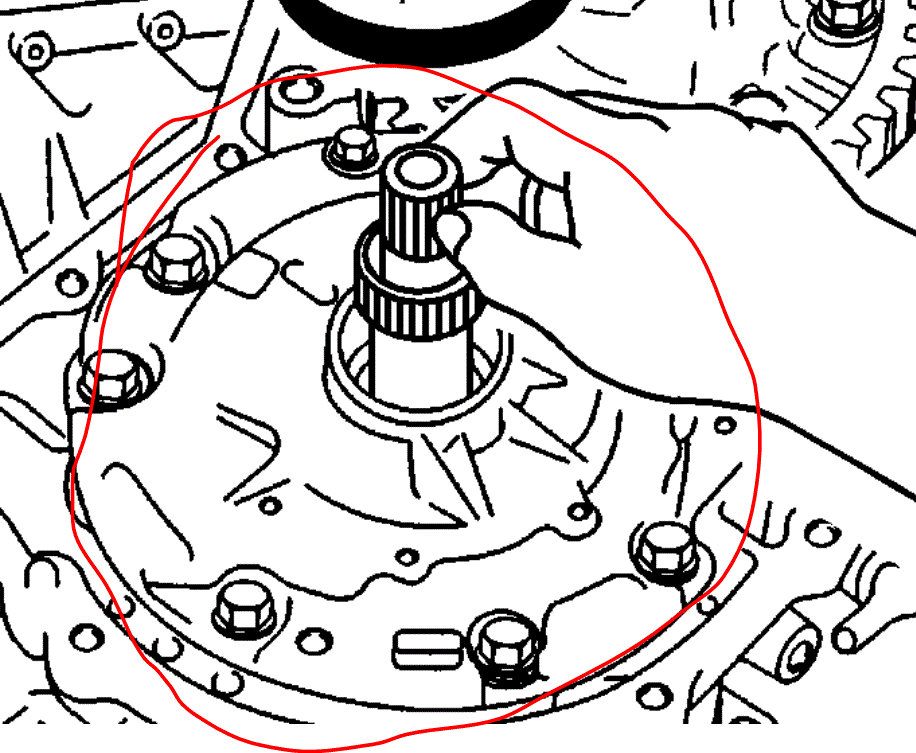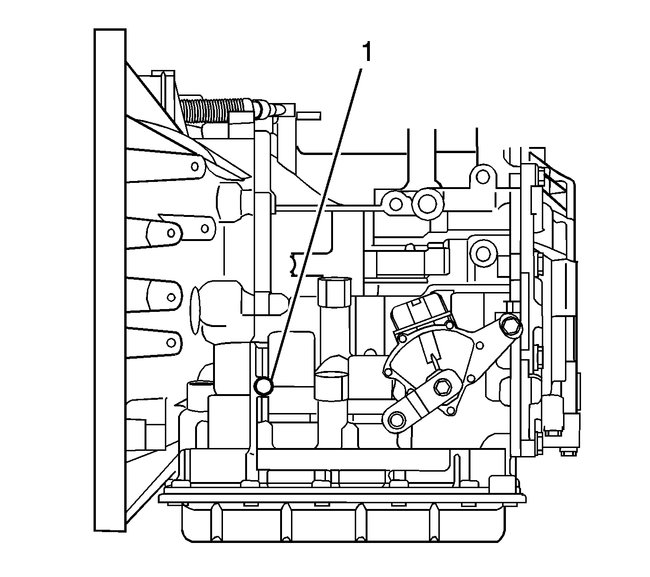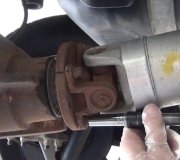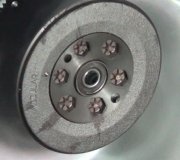Interestingly, anytime there is a hard part failure, I replace the converter because anything could be in it. Also, the idea that I mentioned about line pressure sort of mirrors what you are describing. If you accelerate slowly, the RPM's are low which can cause low line pressure to show. As far as the torque converter, my manuals do not show the specs you are requesting.
Also, keep in mind there is a front pump (hydraulic pump) at the front of the transmission that could be failing as well. (See Pic 1) The only way to check these things is by testing line pressure. Based on the hydraulic pressure created by the oil pump, the transmission control module (TCM) sends signals to the solenoid and the hydraulic control system governs the hydraulic pressure acting on the torque converter, planetary gear, clutches, and so on. If pressure is low, it will slip. I think you could be on the right track with the converter or it could be related to the front pump. The only way to be sure is to check pressure. And yes, the pump could make a noise as well.
_____________________________
Here is how that is checked. Pics 2 and 3 correlate with these directions.
____________________________
2010 Chevrolet Aveo L4-1.6L
Line Pressure Check
Vehicle Transmission and Drivetrain Automatic Transmission/Transaxle Testing and Inspection Component Tests and General Diagnostics Aisin 81-40LE - Automatic Transmission Line Pressure Check
LINE PRESSURE CHECK
Line Pressure Check
Tools Required
* J 21867 Pressure Gage
* J-21867-50 Transmission Line Pressure Adapter
The hydraulic test can inspect the working condition inside the automatic transmission (A/T) by measuring line pressure in drive (D)/reverse (R) range and idle/stall condition.
Pic 1
1. Wedge the 4 wheels and apply the parking brake fully. Lock the vehicle in place.
2. Install J 21867 and J-21867-50 to test the hole (1) for line pressure.
Important: Do not continuously run longer than 5 seconds. Extreme increasing of oil temperature may occur.
3. Fully press on the brake pedal with left foot, shift into drive (D) and reverse (R) range and measure the line pressure idle/stall condition.
* The engine idle line pressure in drive (D) is 0.14-0.37 mPa (20.30-53.70 psi).
* The engine idle line pressure in reverse (R) is 0.59-0.68 mPa (85.60-98.62 psi).
* The engine stall line pressure in drive (D) is 1.10-1.23 mPa (159.54-178.40 psi).
* The engine stall line pressure in reverse (R) is 1.58-1.83 mPa (229.16-265.41 psi).
Make sure to keep interval for more than 1 minute between stall tests.
Make sure to check that there is no oil leak after installing J 21867 and J-21867-50.
Pic 2
_____________________________
In the last pic, it explains what low pressure can be caused by. I would find out if they have checked pressure. Stall line pressure is indicated in the above directions.
I hope something here helps.
Let me know,
Joe
Images (Click to make bigger)
Sunday, March 1st, 2020 AT 7:25 PM






